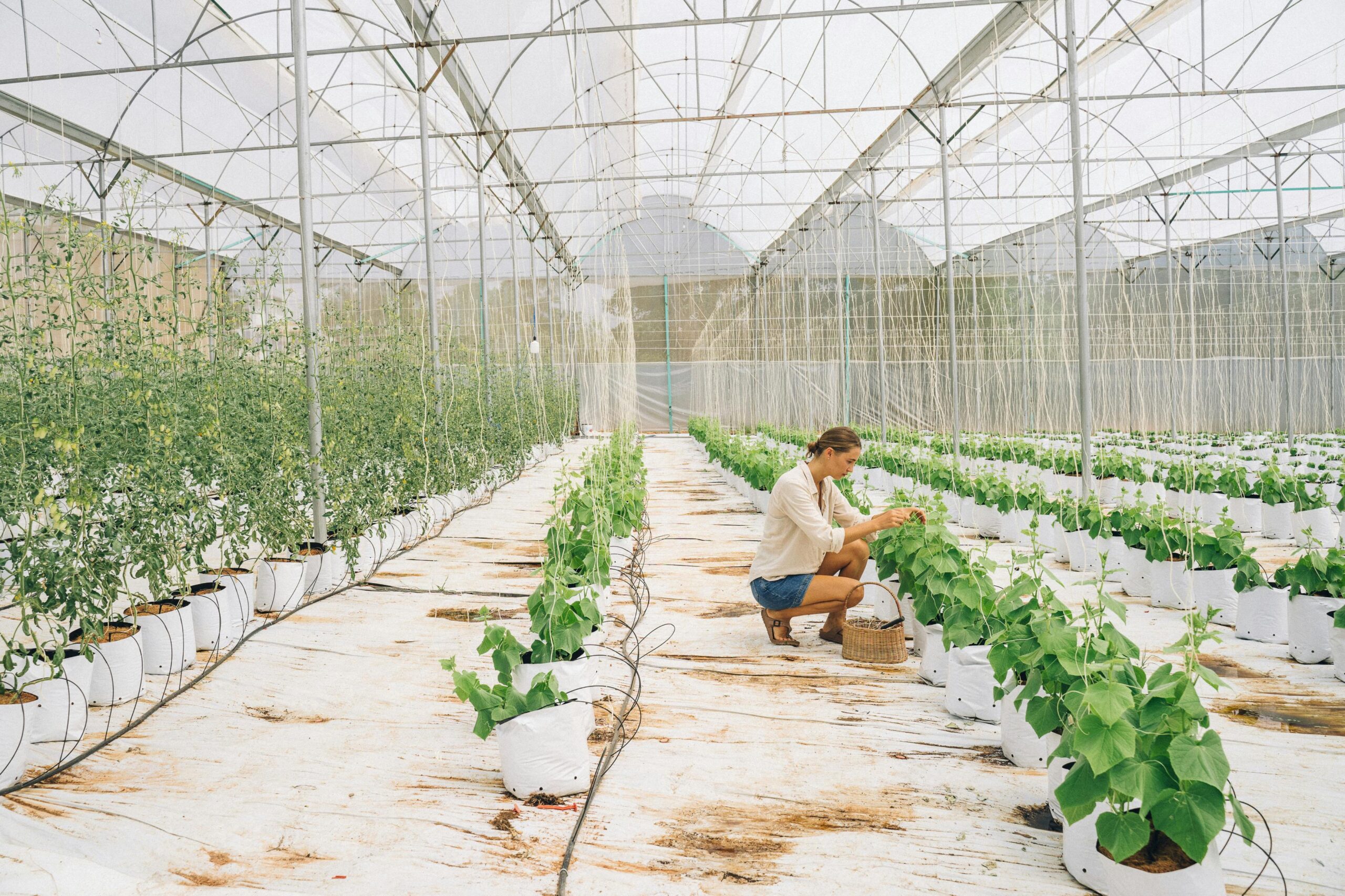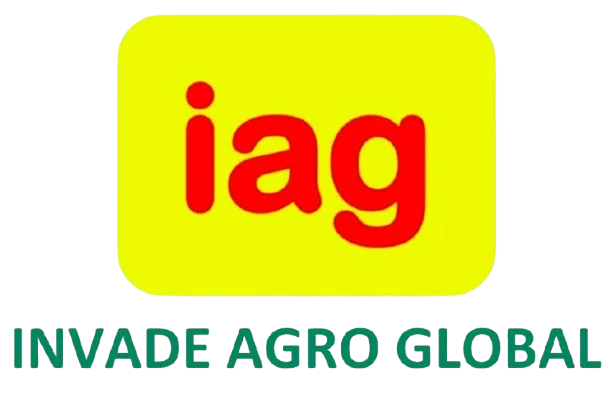
Sustainable Crop Protection with Integrated Crop Management
“If the farmer is happy, the country is happy” – such wise words hold for our farm system. But the largest problem for farmers these days is crop loss to pests and diseases. Pests damage up to 40% of global crops every year, according to FAO statistics. Historically, we used pesticides, which were an answer for a while but gave rise to a plethora of problems in the long term, like a decline in soil fertility, water contamination, pest resistance, and health hazards to farmers.
In this case, “sustainable crop protection” was a necessity and not an option. For this reason, in all parts of the globe, there is a trend towards harmonious and ecological solutions like Integrated Pest Management (IPM), which protects crops as well as nature.
What is Integrated Pest Management (IPM), and how does it assist in sustainable crop protection?
Integrated pest management is not a technique but a combined strategy that depends on maintaining the scientific, biological, and conventional methods in balance with one another to manage pests. Unlike the extermination of pests, the primary objective of the strategy must be to limit them to an extent that it would never be economically disadvantageous.
The underlying principle of IPM is to “protect crops without disturbing the balance of nature.” This means biological control, mechanical control, crop rotation, resistant seeds, and chemicals if unavoidable.
Important advantages of IPM in sustainable crop protection are as follows:
- Less reliance on chemicals: Successive use of pesticides may cause the pest to resist them. IPM avoids this.
- Conservation of soil and water: IPM minimizes chemical residues and hence protects natural resources.
- Biodiversity Conservation: Beneficial species such as bees and butterflies are conserved under IPM and assist in pollination as well as crop development.
- Economic Sustainability: Farmers who use IPM farming methods have huge savings on pesticide costs and enjoy greater long-term profitability.
- Long-Term Benefits: Not only is the current crop retained, but soil health as well as environmental stability are provided for future generations.
IPM, in a way, is not a technical tool but a general sustainable crop protection lifestyle for the farmer, consumer, and the environment.
What are the limitations of conventional pesticide-based control?
The adage goes, “Excess of anything is bad.” Similarly, it is with pesticides too. Chemical pesticides, in recent decades, provided instant respite for farmers in the protection of their crops, but excessive and uncontrolled use by them now poses a real danger to sustainable crop protection.
Insect Resistance
If repeatedly applied, the same type of pesticide, the pests gradually develop resistance to it. This directly impacts farmers’ costs, as they spend more money and more effective chemicals annually. The cost of production increases, while profit decreases.
Soil and Water Pollution
Large-scale use of chemicals has adverse effects on soil fertility. Further, numerous studies have concluded that pesticide residues are deposited in groundwater and rivers. Not only does pollution affect the environment, but it also affects human health and animals.
Loss of Biodiversity
Pesticides kill not only harmful pests but also useful species. When the useful pollinators, bees and butterflies, are declining, crop output and quality suffer. This has an ecosystem imbalance.
Threat to Human Health
As per one report, every year around 385 million individuals suffer from unintentional poisoning with pesticides, leading to 11,000 deaths. They expose farmers and agricultural workers to a number of diseases, ranging from skin infections and respiratory conditions to cancer in extreme cases. Other residues adhere to food where consumption occurs, resulting in concomitant health risks.
Thus, conventional pesticide-managed control contributes to an immediate solution to some extent, but ultimately, it proves to be harmful to the farmer, nature, and consumers. Hence, we are left with no option but to revert to alternatives such as Integrated Pest Management (IPM) for sustainable crop protection today.
Key highlights of IPM: The Pillar of Sustainable Crop Protection
The strength of Integrated Pest Management (IPM) is that it never loses its concentration on a single act, but instead on the harmonious application of numerous scientific and traditional practices. This variety positions itself as the backbone of sustainable crop protection.
Monitoring and Surveys
IPM is followed by the ongoing surveillance in the fields. Periodic surveys enable farmers to identify whether the pest population has increased to the extent of economic loss. This can avoid wasteful use of pests.
Preventive Measures
Prevention is better than a cure. IPM includes crop rotation, resistant variety selection, and proper irrigation and nutrient delivery. These regulate pest populations early.
Biological Control
This is the most environmentally friendly aspect of IPM. It utilizes beneficial insects (such as ladybird beetles) and microorganisms (Bacillus thuringiensis, neem-based formulations) that are capable of naturally inhibiting ruinous pests.
Mechanical and Physical Controls
Traps, barrier nets, and deep plowing are also part of IPM. These controls are inexpensive and non-hazardous.
Chemical Controls
Chemicals used in IPM are used only when all the other controls do not work. Even then, they must be used in minimum amounts, against the specific issue.
All these components, melting into each other, give protection to the crop, but also protect the soil, water, and environment. This is why IPM has been called the backbone of sustainable crop protection.
IPM Benefits for Farmers and the Environment
The biggest benefit of Integrated Pest Management (IPM) is that the benefits do not only accrue to the crop but also to farmers, consumers, the environment, and future generations. Therefore, it is termed the cornerstone of sustainable crop protection.
Economic Benefits
Farmers using IPM do not invest significantly in chemical pesticides. The use of IPM reduces pesticide costs significantly. This directly impacts the income of farmers. When production is stabilized and costs are reduced, farmers gain higher profits and financial stability.
Environmental Benefits
IPM’s biggest contribution is to protect the environment. It keeps soil fertile, does not let water bodies get polluted, and helps keep biodiversity intact. Beneficial insects such as bees and butterflies are kept safe, which enhances crop pollination and keeps the natural balance intact.
Health and Social Benefits
The IPM practice is advantageous to the health of both the consumer and farmers. The farmers are protected from harm through the prevention of risks due to constant exposure to chemicals. At the same time, chemical residues in food offered to consumers are reduced, thus providing safe and quality food to society.
Long-Term Safety
IPM not only guarantees contemporary farming but also saves land, water, and natural resources for upcoming crops. It encourages farmers to become self-sufficient and sustainable in agricultural practices.
Thus, IPM gives contemporary agriculture a method that favors production while harmonizing with nature. This qualifies it as the most reliable basis for sustainable crop protection.
What are the challenges in adopting IPM for sustainable crop protection?
Integrated Pest Management is an ideal and environmentally friendly approach, but there are several impediments to putting it to use on a large scale. All of them save at the technological level are at the societal and economic level.
Lack of Awareness
The biggest challenge is that farmers are unaware. Small and marginal farmers are not aware of the scientific aspect of IPM. It is difficult to make them believe that monitoring, insect protection, or biological methods are just as effective as chemicals. Regular training programs and farmer workshops are needed.
Initial Costs and Availability of Resources
Implementation of IPM does require some initial expense, e.g., pheromone traps, biological control organisms, or monitoring devices. That additional expense is not affordable for small farmers. Moreover, these inputs are not easily found in rural regions.
A Mentality of Quick Results
Farmers are likely to adopt solutions that yield short-term results. Spraying chemical pesticides yields outcomes within hours, whereas biological or mechanical ones take time. Such an attitude presents the largest psychological hurdle to IPM.
Lack of Policy and Institutional Support
There aren’t sufficient policy incentives and subsidies in the majority of nations that can be provided for IPM promotion. If it is assigned a high priority by governments and agricultural institutions, its acceptance and efficacy could propagate very quickly.
Despite these, if one moves in the right direction – awareness, training, and government initiative- then IPM will not only be a hit with the farmer but also prove to be a strong base for sustainable crop protection.
The Future: The Role of Innovation and Technology for Sustainable Crop Protection
There was never stagnant agriculture, but this dynamic is happening today at an unprecedented level. Technology and innovation are ushering in a new age of sustainable crop protection. The future game changers will be those emerging technologies that increase the efficiency of IPM.

Role of Innovation and Technology for Sustainable Crop Protection
Smart Surveillance and Artificial Intelligence (AI)
Today, with sensors, drones, and AI systems established, pest movement in fields can be tracked in real time. For instance, AI-powered drones not only identify pests but also recommend where and to what extent control treatments would be required. This enables precise as well as economic control.
Biopesticides and Biotechnology
Scientists have formulated biopesticides and microorganisms, which repel pests without disturbing the environment. Biotechnology has also augmented IPM through disease-resistant crop breeding.
Digital media and mobile apps
Mobile applications and online media are used to empower farmers in implementing the IPM steps through training. Previously, farmers used to receive information on pest management from nearby persons when required. Now, timely and proper information on pest management steps reaches them at their residence and comfortable locations.
Policy support and coordination
Future farm policies, as well as policies of agricultural departments, will be instrumental in supporting IPM. Subsidies and incentives will have to be given if the farmers are to adopt these with ease.
As a general observation, the future will witness IPM becoming more efficient and widespread due to technology and innovation. This will not only prove to be cost-effective for farmers but also climate-friendly and environmentally friendly.
Invade Agro Global makes a commitment to partner with farmers in further accelerating this path of sustainable crop protection. Join hands with us and together make farming safe, smart, and future-ready.
